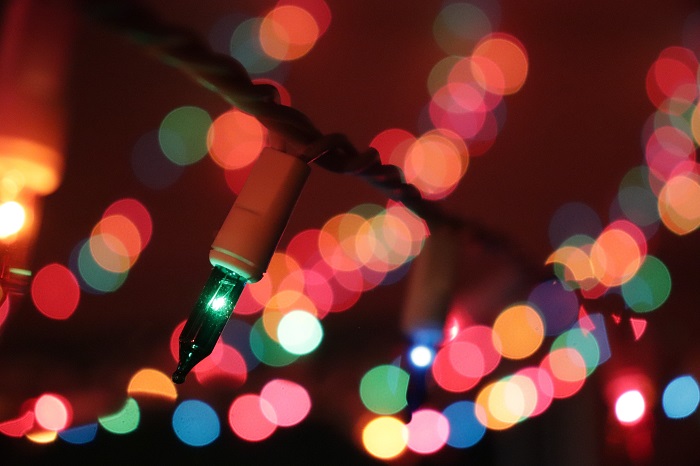Happy holidays! Despite the added commitments and extended to-do lists that come with it, I’m a big fan of this festive time of year.
As we deck the halls at home, work, and throughout our communities, we can thank Edward H. Johnson for creating the first string of electric Christmas tree lights in 1882. According to the Library of Congress, "Before electric Christmas lights, families would use candles to light up their Christmas trees. This practice was often dangerous and led to many home fires. ... Johnson, [Thomas A.] Edison’s friend and partner in Edison’s Illumination Company, hand-wired 80 red, white and blue light bulbs and wound them around his Christmas tree. Not only was the tree illuminated with electricity, it also revolved.”
Although it would take decades for the practice to catch on with — and be affordable for — the public, a new tradition was born.
Replacing candles with electric lights was a major step forward in holiday safety. However, decorations still cause approximately 25% of fires during the holiday season, and ‘tis also the season that keeps our first responders busy. According to ESFI, nearly half of home fires occur during the winter months of December, January, and February.
In my latest episode of Public Power Conversations, I discuss this important topic with Brett Brenner, president of the Electrical Safety Foundation International (ESFI). Brett has been at ESFI for more than 16 years, leading its efforts to educate the public and reduce the incidence of electrically related deaths.

As we decorate our homes and increase our use of electricity during this time, we must keep an eye on safety. Here are four tips to consider. (I’ll reveal now that the extension cord one was new to me!)
- Inspect and (if needed) replace old holiday lights: The decorations you packed up and stored away last winter need to be inspected for wear and, if showing signs of wear or damage, replaced. Wires break down over time and new lighting technologies are safer and more energy-efficient. I'm guilty of this at my own house. I’m focusing on being more mindful and replacing my old lights with more energy-efficient LEDs instead of jerry-rigging the ones we've had for 10 years.
- Turn off the lights when not at home: This may look nice for the neighbors, but if something goes wrong it can go from bad to worse very quickly, especially if no one’s around to report an emergency. Turning lights off when leaving home is so important!
- Prevent tree fires: If you have a live tree in your home or business, be diligent and don’t leave it up too long after the holidays. Taking down the tree after the holidays is a bit melancholy and it’s tempting to stop watering the tree once all the holiday excitement is over. But leaving up a dry tree with the lights set on a timer can be a huge fire hazard. Dry pine is the perfect kindling for a fire that can get out of control very quickly. Artificial trees are usually safer than real trees in terms of fire prevention, but they can present hazards if overloaded with lights that aren’t intended for use on them.
- Don’t overextend extension cords: Whether in a home or office setting, when plugging in decorative lights it’s common to have extension cords run across walkways, behind furniture, or under rugs, which can create hazards. A good rule of thumb for extension cords, regardless of the season, is to use them for 30 days or less. That’s because they're only designed for temporary use. And whatever cords are used, make sure they’re rated for indoor or outdoor applications. Don’t mix those up!
Check out the episode as well as ESFI’s holiday safety tips.
And let me add that I’m excited to have recently joined ESFI’s board of directors and am eager to dive in and support ESFI’s great mission.
Have a happy and safe holiday season!
